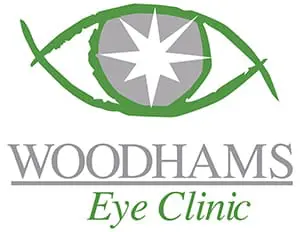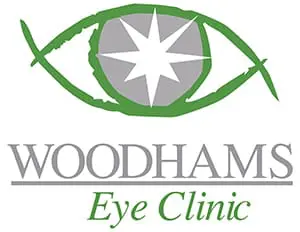
Lasik Risks
What are the risks and how can I find the right doctor for me?
Most patients are very pleased with the results of their refractive surgery. However, like any other medical procedure, there are risks involved. That’s why it is important for you to understand the limitations and possible complications of refractive surgery.
This video has wandered off to another part of the woods.
Contact Rendia support for help with your account.
Before undergoing a refractive procedure, you should carefully weigh the risks and benefits based on your own personal value system, and try to avoid being influenced by friends that have had the procedure or doctors encouraging you to do so.
- Some patients lose vision. Some patients lose lines of vision on the vision chart that cannot be corrected with glasses, contact lenses, or surgery as a result of treatment.
- Some patients develop debilitating visual symptoms. Some patients develop glare, halos, and/or double vision that can seriously affect nighttime vision. Even with good vision on the vision chart, some patients do not see as well in situations of low contrast, such as at night or in fog, after treatment as compared to before treatment.
- You may be under treated or over treated. Only a certain percent of patients achieve 20/20 vision without glasses or contacts. You may require additional treatment, but additional treatment may not be possible. You may still need glasses or contact lenses after surgery. This may be true even if you only required a very weak prescription before surgery. If you used reading glasses before surgery, you may still need reading glasses after surgery.
- Some patients may develop severe dry eye syndrome. As a result of surgery, your eye may not be able to produce enough tears to keep the eye moist and comfortable. Dry eye not only causes discomfort, but can reduce visual quality due to intermittent blurring and other visual symptoms. This condition may be permanent. Intensive drop therapy and use of plugs or other procedures may be required.
- Results are generally not as good in patients with very large refractive errors of any type. You should discuss your expectations with your doctor and realize that you may still require glasses or contacts after the surgery.
- For some farsighted patients, results may diminish with age. If you are farsighted, the level of improved vision you experience after surgery may decrease with age. This can occur if your manifest refraction (a vision exam with lenses before dilating drops) is very different from your cycloplegic refraction (a vision exam with lenses after dilating drops).
- Long-term data are not available. LASIK is a relatively new technology. The first laser was approved for LASIK eye surgery in 1998. Therefore, the long-term safety and effectiveness of LASIK surgery is not known.
Additional Risks if you are Considering the Following:
Monovision
Monovision is one clinical technique used to deal with the correction of presbyopia, the gradual loss of the ability of the eye to change focus for close-up tasks that progresses with age. The intent of monovision is for the presbyopic patient to use one eye for distance viewing and one eye for near viewing. This practice was first applied to fit contact lens wearers and more recently to LASIK and other refractive surgeries. With contact lenses, a presbyopic patient has one eye fit with a contact lens to correct distance vision, and the other eye fit with a contact lens to correct near vision. In the same way, with LASIK, a presbyopic patient has one eye operated on to correct the distance vision, and the other operated on to correct the near vision. In other words, the goal of the surgery is for one eye to have vision worse than 20/20, the commonly referred to goal for LASIK surgical correction of distance vision. Since one eye is corrected for distance viewing and the other eye is corrected for near viewing, the two eyes no longer work together. This results in poorer quality vision and a decrease in depth perception. These effects of monovision are most noticeable in low lighting conditions and when performing tasks requiring very sharp vision. Therefore, you may need to wear glasses or contact lenses to fully correct both eyes for distance or near when performing visually demanding tasks, such as driving at night, operating dangerous equipment, or performing occupational tasks requiring very sharp close vision (e.g., reading small print for long periods of time).
Many patients cannot get used to having one eye blurred at all times. Therefore, if you are considering monovision with LASIK, make sure you go through a trial period with contact lenses to see if you can tolerate monovision, before having the surgery performed on your eyes. Find out if you pass your state’s driver’s license requirements with monovision.
In addition, you should consider how much your presbyopia is expected to increase in the future. Ask your doctor when you should expect the results of your monovision surgery to no longer be enough for you to see near-by objects clearly without the aid of glasses or contacts, or when a second surgery might be required to further correct your near vision.
Bilateral Simultaneous Treatment
You may choose to have LASIK surgery on both eyes at the same time or to have surgery on one eye at a time. Although the convenience of having surgery on both eyes on the same day is attractive, this practice is riskier than having two separate surgeries.
If you decide to have one eye done at a time, you and your doctor will decide how long to wait before having surgery on the other eye. If both eyes are treated at the same time or before one eye has a chance to fully heal, you and your doctor do not have the advantage of being able to see how the first eye responds to surgery before the second eye is treated.
Another disadvantage to having surgery on both eyes at the same time is that the vision in both eyes may be blurred after surgery until the initial healing process is over, rather than being able to rely on clear vision in at least one eye at all times.
Finding the Right Doctor. If you are considering refractive surgery, make sure you:
- Compare. The levels of risk and benefit vary slightly not only from procedure to procedure, but from device to device depending on the manufacturer, and from surgeon to surgeon depending on their level of experience with a particular procedure.
- Don’t base your decision simply on cost and don’t settle for the first eye center, doctor, or procedure you investigate. Remember that the decisions you make about your eyes and refractive surgery will affect you for the rest of your life.
- Be wary of eye centers that advertise, “$299 an eye!” or “package deals.” It’s a bait-and-switch tactic in most cases.
- Read. It is important for you to read the patient handbook provided to your doctor by the manufacturer of the device used to perform the refractive procedure. Your doctor should provide you with this handbook and be willing to discuss his/her outcomes (successes as well as complications) compared to the results of studies outlined in the handbook.
Even the best screened patients under the care of most skilled surgeons can experience serious complications.
- During surgery. Malfunction of a device or other error, such as cutting a flap of cornea through and through instead of making a hinge during LASIK surgery, may lead to discontinuation of the procedure or irreversible damage to the eye.
- After surgery. Some complications, such as migration of the flap, inflammation or infection, may require another procedure and/or intensive treatment with drops. Even with aggressive therapy, such complications may lead to temporary loss of vision or even irreversible blindness.
Under the care of an experienced doctor, carefully screened candidates with reasonable expectations and a clear understanding of the risks and alternatives are likely to be happy with the results of their refractive procedure.
Advertising. Be cautious about “slick” advertising and/or deals that sound “too good to be true.” Remember, they usually are. There is a lot of competition resulting in a great deal of advertising and bidding for your business. Do your homework.
If you want to know more about advertising ethics, do’s and don’ts, or want to report on false advertising, explore the nearby Useful Links.
If you would like to learn more about LASIK, please contact Woodhams Eye Clinic to schedule your personal consultation.

